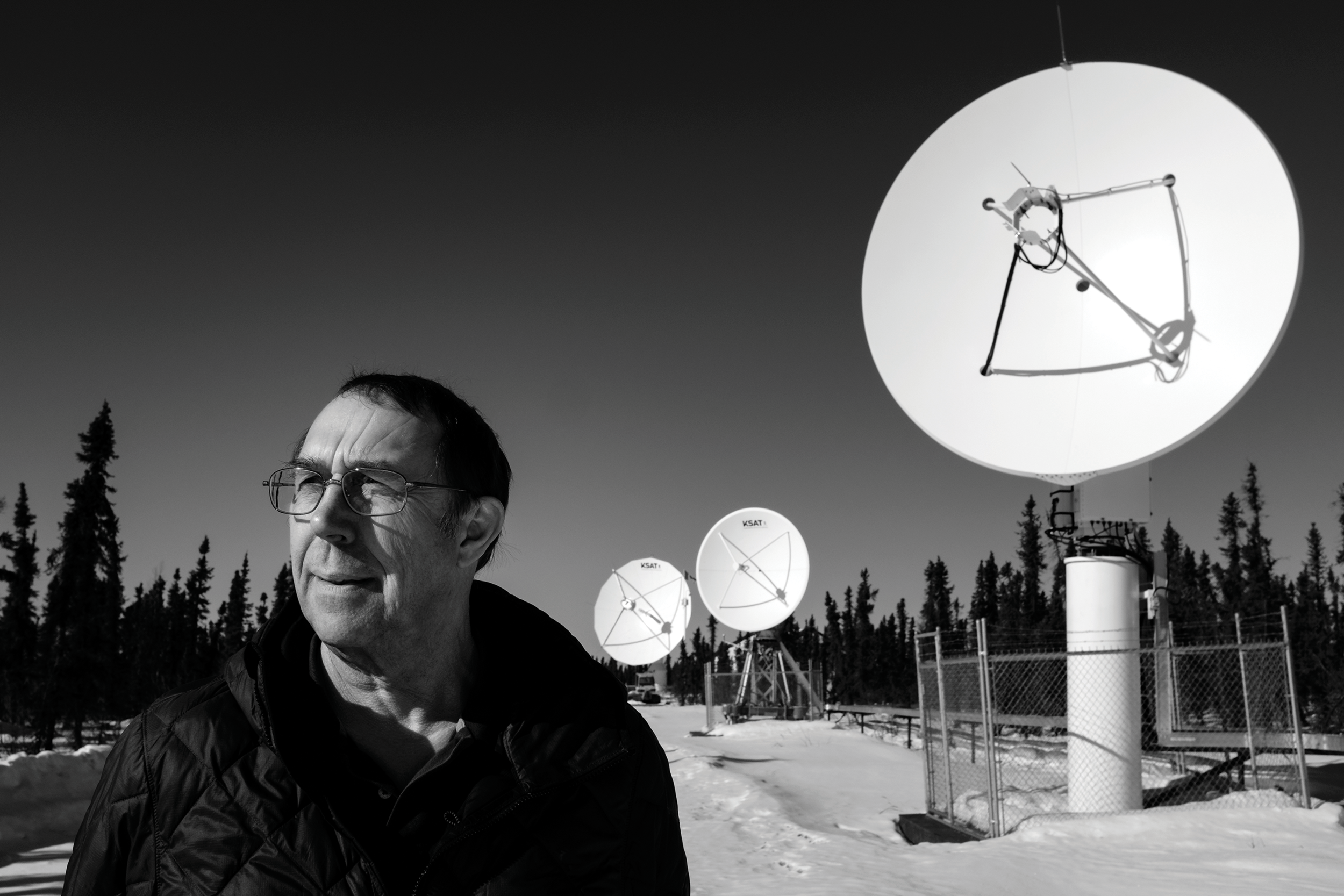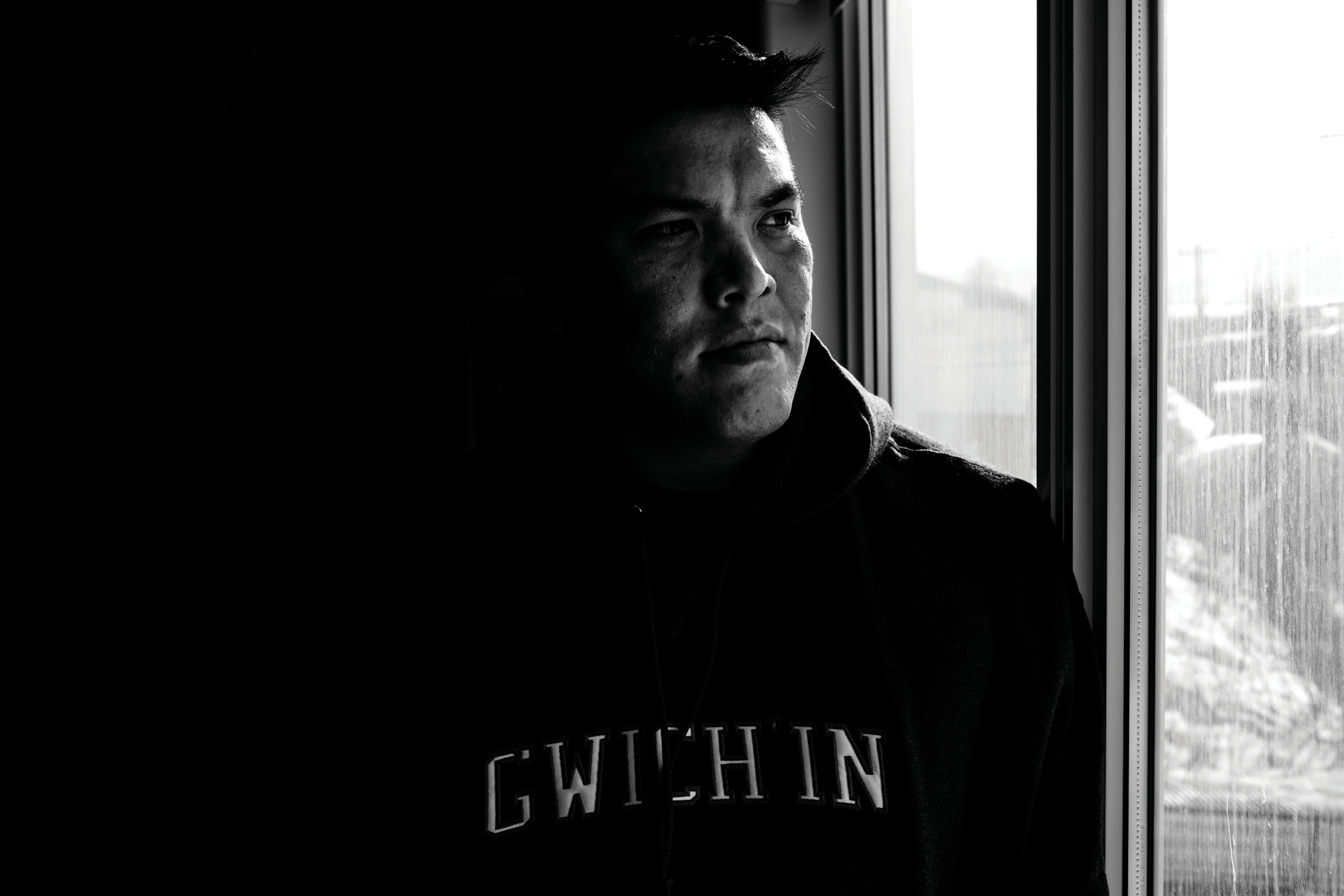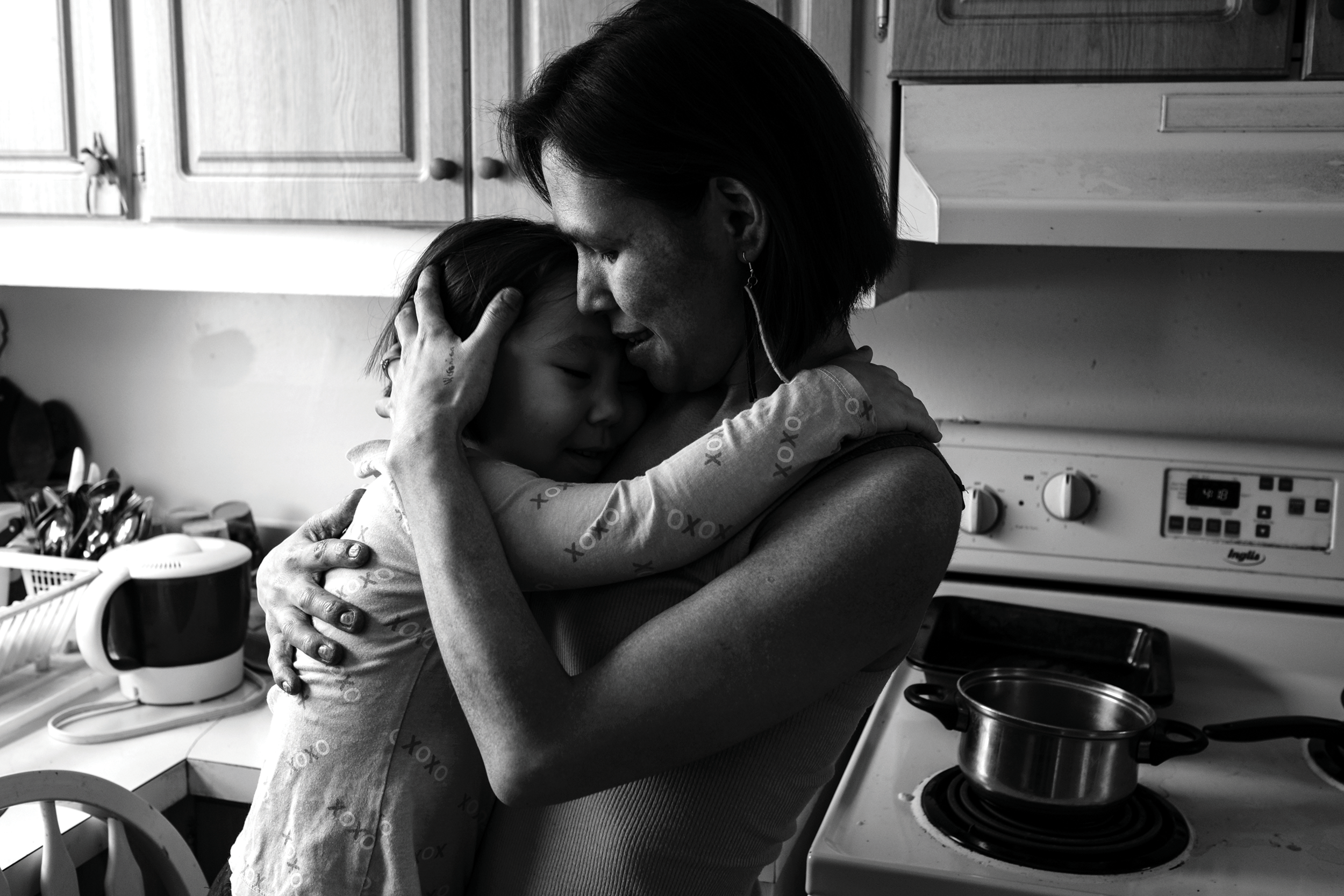

















Lucy Kuptana and Peggy Day are on the board of the Inuvik Homeless Shelter. “We know our clients pretty well. A lot of them are residential school survivors, 60s scoop survivors. The government policies make it incredibly hard for people to get back on their feet. People have different circumstances, and those policies are often working against them. We have a social housing shortage. I think there are 75 people on the waiting list for housing, some of them could be waiting for years. What we do here in the shelter, it’s what the government should be doing. A lot of our work is done after 5pm, on top of our regular jobs. It’s so difficult to make it month to month, pay the bills, insurance, wages. We get about $220k in funding and we spend every penny“. The shelter serves about 20 clients a night. The number tends to be higher during the holiday season. Due to a long waiting list for social housing units and an unknown number of people who are formally homeless but couch surf with friends and family, the scale of homelessness in Inuvik is hard to estimate.

Inuvik Community Greenhouse executive director Raygan Solotki and manager Marion Macé prepare for another gardening season. Gardeners water the dirt before the first round of seeding by piling on some snow in their plots, before the temperatures outside rise above freezing and running water can be turned on. The facility, formerly a hockey arena, has been operating as a community and commercial greenhouse for 20 years. It now acts as the hub for greenhouse programs in the eight communities of the Beaufort Delta. The staff help fund geodesic domes and greenhouses, train greenhouse coordinators from respective communities, and organize courses in food preservation and processing. Inuvik Community Greenhouse strives to improve food security in the communities and make fresh, affordable produce available for everyone by growing it locally.

Ashley Morine goes through her medical and travel records from the time of her cancer diagnosis and treatment. “I initially visited the ER in Inuvik in September 2017 with loss of peripheral vision in my left eye. We do not have an eye specialist in Inuvik full-time, the ER physician didn’t have any answers for me. My diagnosis was delayed as there were no visual signs that would be alarming to them. I demanded to be seen in Yellowknife by an opthamologist, and after a quick look in my eye it was evident that there was a mass in my eye. My ocular melanoma diagnosis came 4 months after my first visit to the Inuvik Regional Hospital.”

Karla Kuptana stands in front of her Inuvik home with her children Hailey and Nicholas. “When Hailey was in kindergarten she had an option to have her class taught in Inuvialuktun. I thought that was pretty cool. I like that my kids are being taught their culture outside of home. They are learning the language and traditional skills beyond what we know. I think having Inuvialuktun in school is very beneficial – it helps the people who don’t get to experience their culture at home reconnect to their roots.”

Dustin Smith is a grade 12 student. “I started doing make up in grade 10, and I’ve been doing it every day since. When I do drag I get into a quiet space where I can enjoy what I’m doing. When I started doing make up I realized how much I could change my face, sculpt it. I taught myself a lot things from YouTube. My first liquid lipstick was from Jeffree Star, in the colour Scorpio. That’s where my make up journey started. Jeffree Star still is a big inspiration for me. I get occasional glances, people ask if I’m transgender or something. I just say I’m Dustin. People say I do girly things but to me it doesn’t matter. I don’t like to be tied up to gender roles.”

Inuvik’s water treatment plant opened in March 2017. It replaced a nearly 60-year-old water supply system, where the town would draft from the East Channel of the Mackenzie River in the winter, and Hidden Lake in the summer. Now the town’s drinking water supply comes from the river year-round. The water gets filtered and undergoes a UV light treatment before it is pumped up to the water tower. With the new treatment system in place, tap water in Inuvik meets the Canadian drinking water standards.

Diesel storage at the NWT Power Corporation facility in Inuvik. The town has two power plants, one diesel powered and one natural gas powered, currently running on liquified natural gas (LNG). LNG is about 10-15% cheaper and creates about 25% less greenhouse gas emissions than diesel. Despite partially relying on LNG, Inuvik has the highest diesel fuel consumption for electricity in the territory. The fuel for both power plants is delivered by road from southern Canada. Across the Northwest Territories the electricity cost is the main contributor to the high cost of living. NWT residents pay the highest price for electricity in all of Canada. Power generation creates almost 30% of the territory’s greenhouse gas emissions. In November 2018 the Inuvik Wind Generation project was announced. It is the first project announced under the Government of Canada’s Arctic Energy Fund. The fund supports energy security in communities in the North by investing in upgrades to existing fossil fuel-based energy systems, as well as supplementing or replacing these systems with renewable energy options. The wind turbine project is expected to be completed by 2021. According to the Department of Infrastructure, wind energy generated from the Inuvik Wind Generation project could reduce diesel consumption in the community by up to 30%.

Tundra North Tours owner Kylik Kisoun Taylor repairs an igloo at his camp on the Mackenzie Delta after it collapsed due to unusually warm weather in March 2019. He has been running tours in the region since 2006. “I think people come to us because they want an authentic experience. Doing a tour led by indigenous people is more than just simply seeing something or going somewhere, you can really experience what the land and the culture have to offer, and to connect to the environment. It’s an intimate interaction with a world different than your own.”

Tom Zubko is the owner of New North Networks, a company that operates a privately-owned satellite ground station in Inuvik. The town’s geographical location, combined with no radio interference in the area and the already existing fiberoptic line, make Inuvik a perfect spot for development of ground stations receiving data from satellites. Inuvik has seen no economic growth since the days of fossil fuel exploration in the Mackenzie Delta. Growing satellite industry could provide a boost to local economy. Unfortunately, the licensing system for satellite ground stations in Canada dates back to when satellites were strictly a government affair. While the satellite industry worldwide is being taken over by the private sector, the licensing process in Canada remains unchanged, making it one if the longest and most complicated in the world. This makes the Inuvik Satellite Ground Station Facility less attractive for potential clients and causes local residents to miss out on the economic opportunities that the international space industry could bring to the region.

“I started volunteering at the food bank when I was 14 because I wanted to change the world and I thought that the food bank was a good place to start. I started volunteering there and my whole family got involved with me. I believe that with the high cost of living in the North, it’s important that we have an organization like the food bank to fall back on to. It provides you with food for a few meals and allows you the peace of mind to focus on bettering your situation, rather then worrying about how you are going to feed yourself or your family. I’m proud that the food bank is able to offer things like fresh fruits and vegetables, it encourages people to cook and provides a higher source of nutrients than packaged food.” - Raven Firth, Inuvik food bank volunteer.
According to data published by PROOF, an interdisciplinary research team investigating household food insecurity in Canada, 17.6% households in the Northwest Territories are food insecure, and over 30% of the territory’s children live in food insecure households. Food security is one of the key components to fighting social inequality. Studies have shown that adults and children in food insecure households have poorer mental and physical health, poorer oral health, greater stress, and are more likely to suffer from chronic conditions. Food insecurity can be detrimental to children’s academic achievement, potentially perpetuating a cycle of poverty and food insecurity.

All buildings in Inuvik are built on piles or blocking that keep the structures above ground level. Lifting the buildings off the ground is meant to provide an even foundation and prevent the building from warming up and melting the underlying permafrost. Northwest Canada is now estimated to be warming up to 3 times as fast as the global average. Inuvik is built on permafrost, consisting of up to 90% water. It makes the community’s infrastructure incredibly vulnerable to climate change. According to the Northwest Territories Association of Communities, thawing permafrost is already causing approximately $51 million worth of damage to public infrastructure across the territory every year. The advocacy group lists resources like access to infrastructure, technology, education and training, and institutions as determining factors in whether a community can adapt to climate change. Does Inuvik have what it takes to try to adapt to climate change, and is it going to be enough?

In March 2019 a group of Inuvik students joined the ‘Fridays for Future’ movement. They have been picketing in various locations in town every Friday during lunch recess, they also started putting pressure on Town Council and local grocery stores to cut down on single use plastic. Music and drama teacher Abe Drennan has been one of the adult supporters of the group. “I think Greta Thunberg inspired a lot of people. She certainly inspired me. When young people start speaking up, people listen because youth usually don’t have a voice on significant matters. It’s important to support them. When it comes to environment, it is their future and it is crucial they understand what they are stepping into.”

Rachel Blakeston holds up a sign at the climate action protest in Inuvik, NWT. A group of elementary school students has been spending their Friday lunch breaks picketing various government buildings, demanding action on issues like climate change and a single use plastic ban. These kids live in Ground Zero for climate change: not only is the Arctic warming up faster than the rest of the planet but also thawing of the Arctic ice and permafrost is creating a positive feedback loop, speeding up climate change worldwide. According to Environment and Climate Change Canada, up to a fifth of deep permafrost could disappear by 2090.

Indigo Taylor holds a pike fish she caught with her dad. Inuvik is located on the East Channel of the Mackenzie River Delta. The Delta is a maze of windy channels, lakes, and ponds covering a vast area of approximately 12,170 square km. It is home to several species of fish, animals, and waterfowl. Beneath this land of great biodiversity lies continuous permafrost. Warming of the climate and thawing of the underlying permafrost would lead to ground slumping and lake drainage. These processes tend to drastically alter the water environment, usually leading to loss of biomass. People living in the Mackenzie Delta region, the Gwich’in and Inuvialuit in particular, have been relying on its natural resources for sustenance. Although consumption of country foods varies from household to household, traditional harvesting remains an integral part of Indigenous heritage and identity. Progressing climate change is threatening the existence of trapping, hunting, and fishing grounds in the Beaufort region.

Gwich’in people have been long time opponents of developing Porcupine caribou calving grounds in Alaska’s Arctic National Wildlife Refuge. The Trump administration is pushing for opening the calving grounds to resource exploration that would likely result in drastic decline of the herd and affect Gwich’in communities on both sides of the US/Canada border. “The caribou are the livelihood of our people and the backbone of our culture” says Jordan Peterson, Deputy Grand Chief of the Gwich’in Tribal Council. “Oil is not a renewable resource. We need a Just Transition from destructive fossil fuels towards sustainable energy and economies. Developing a sacred place such as the calving ground of the Porcupine caribou will bring nothing but negative impact. Sustainment of the Porcupine caribou means sustainment of our people, our culture, our way of life”. [Just Transition is a set of principles, processes, and practices that build economic and political power to shift from an extractive economy to a regenerative economy.]

Danielle Nokadlak was staying in a public housing unit with her young family when the trouble with noisy neighbours began over three years ago. She says the neighbours were drinking and fighting, and she was concerned not only about the noise but also worried for her safety. She started writing complaints and demanding for the neighbours to be evicted, or for her family to be moved to a different unit. The conflict with the NWT Housing Corporation escalated, and Danielle’s family had to move. They are currently in a commercial rental unit, and they have been deemed unsuitable for public housing because now they have a bad record with the local housing authorities. She believes that if her family had been better represented in the conflict with the NWT Housing Corporation, the outcome would have been different. She has since been a vocal proponent for establishing an ombudsman’s office in the NWT. In November 2018 the Northwest Territories MLAs unanimously passed the act to establish ombudsman in the territory.

Youth delegates from a group that has been picketing various government buildings, demanding action on issues like climate change and single use plastic ban as a part of Fridays for Future movement, meet with the Town of Inuvik Mayor Natasha Kulikowski, members of the Town Council, and Northmart manager Kevin Geisbrecht. The youth wanted to know what could be done to eliminate plastic bags and excessive packaging in the grocery store and urged the Mayor and the Council to create a bylaw that would ban singe use plastic in the community.
